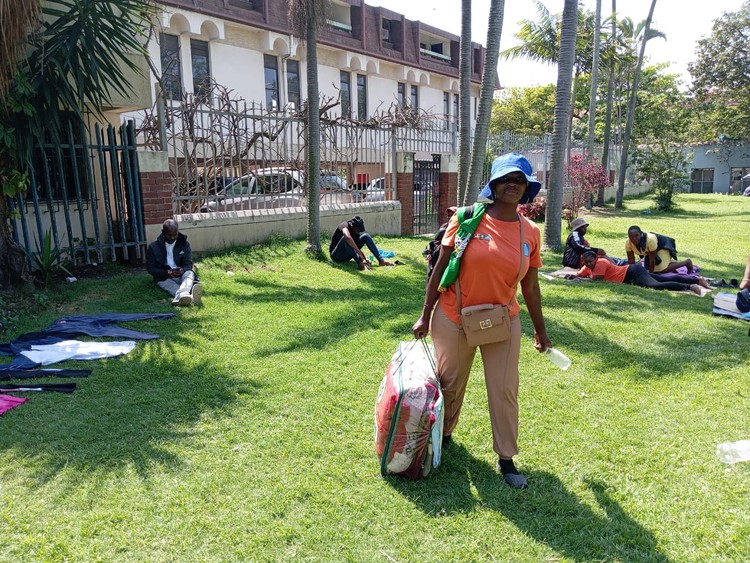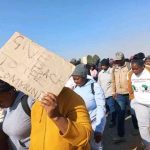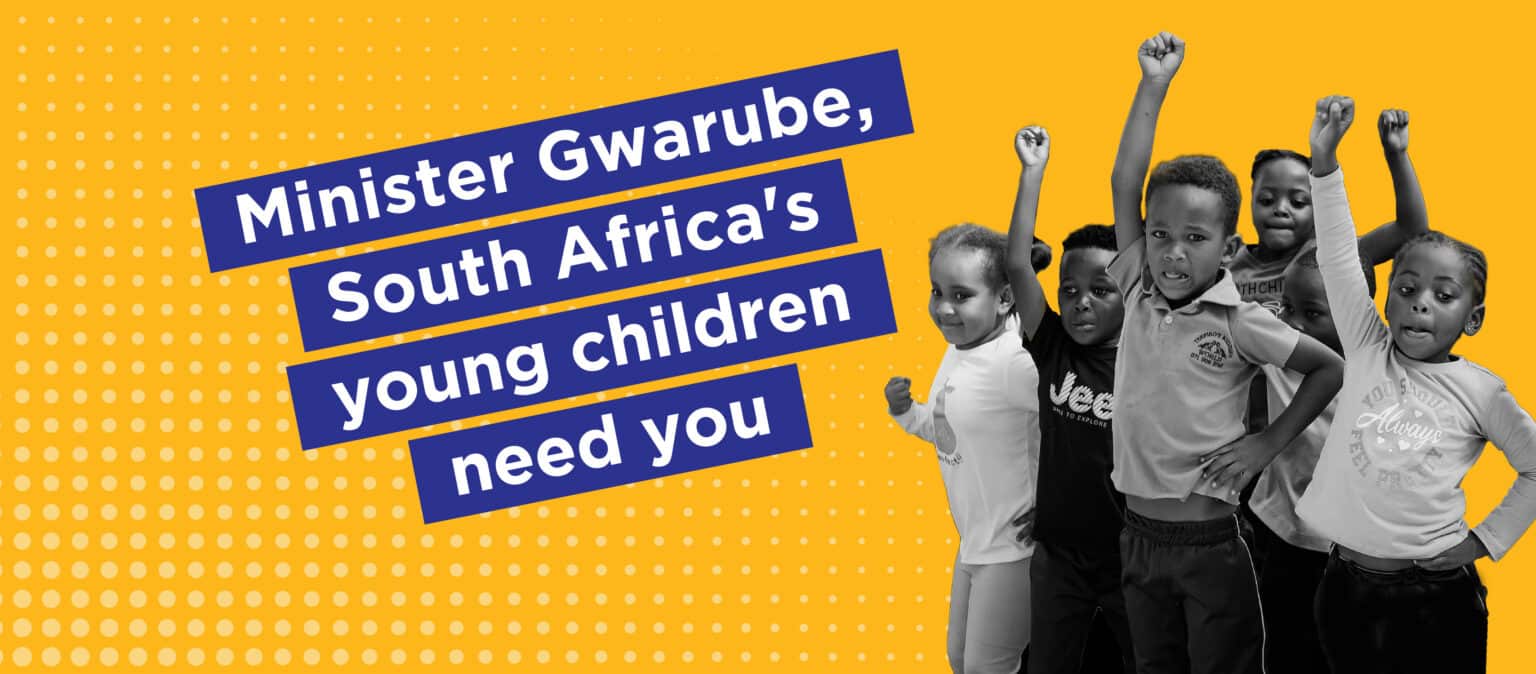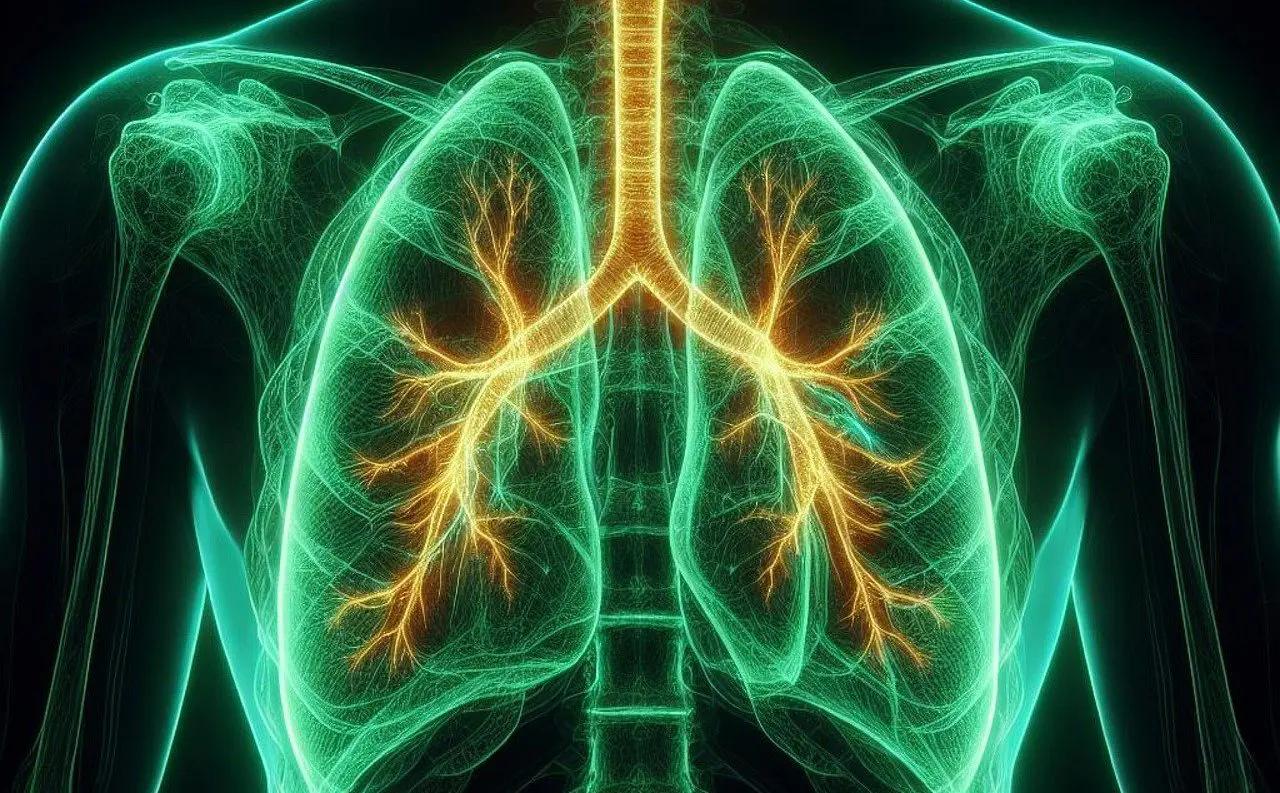By Patricia Ardón
106 days running – from the first days of October 2023 until January 15, 2024 – a large part of the Guatemala population was in the streets and in the communities, claiming their right to resist the imposition of the classist, racist and corrupt regime that has been exercising visible and invisible power for years, and calling to respect the popular will in the 2023 elections.
Guatemala’s history is marked by the Spanish colonial invasion and a State inherited from colonialism that has been dominated by military dictatorships and authoritarian regimes. The Peace Accords signed in 1996 after 36 years of internal armed conflict recognized the existence of Guatemala’s four peoples – Maya, Xinca, Garifuna and Mestizo – in a nation where at least half of the country’s population is of Mayan origin. According to the Historical Clarification Commission promoted by the UN and the Catholic Church’s report of the Project for the Recovery of Historical Memory, also known as “Guatemala: Never Again” (which cost the life of then Archbishop Juan Gerardi Conedera, assassinated three days after presenting the report), the war left more than 200,000 people murdered, more than 90,000 disappeared, more than 300 villages completely razed, multiple crimes of sexual violence and murder of children among others, with long lasting consequences that still affect the population.
The 2023 presidential election was marred by multiple and constant attempts by the so-called Pact of the Corrupt—made up of certain economic elites, government officials and members of organized crime–to hold on to power after the unexpected triumph of the Semilla (Seed) party, formed mostly by academics and progressive activists.
The actors linked to corruption in the Pact of the Corrupt rejected the election results and continued to make every attempt to block the transition, particularly by manipulating “legal” means through the Public Ministry and the Constitutional Court to stage their opposition to the results. Using a justice system co-opted by corruption, they launched a series of direct attacks against the Semilla party and continuous attacks against the newly elected government, the Supreme Electoral Tribunal and all forms of opposition. These attacks persist to this day.
The Pact of the Corrupt launched repeated attempts to prevent the president and vice president who won the elections democratically on August 20, 2023 from assuming power on January 14, 2024. In this critical situation, in late September 2023 indigenous authorities of Sololá and the 48 cantons of Totonicapán called on the Guatemalan people to rise up and demonstrate in the streets and in front of the office of the Public Ministry. Gradually, indigenous authorities from other territories throughout the country joined in under the slogan of defending democracy–a democracy that, paradoxically, has brought little or no benefit to the historically impoverished indigenous, rural and urban majorities.
On January 14, the date scheduled for the inauguration, the ceremony was delayed for hours–to the point that several dignitaries attending (including the King of Spain and the President of Chile) had to leave before President-elect Bernardo Arevalo and Vice President Karen Herrera could take office. Members of the Pact of the Corrupt in congress tried to prevent the inauguration up to the last minute, despite the embarrassment their actions caused among the population and the international community. These moves pushed the ceremony late into the night. They were only stopped when another group of congressional representatives burst into the room where they were meeting to try to stop the inauguration of the president and vice president through the use of clearly illegal arguments.
Finally, the official ceremony took place. Afterwards the new president and vice president went to meet with the resistance and indigenous authorities in front of the Public Ministry to thank them and publicly acknowledge their support for democracy. They arrived at the Central Plaza around 3:00 a.m. on the 15th, where a crowd had gathered since early afternoon to celebrate the victory of a new progressive government. However, since months before and during the entire period of mobilization following the election, the most consistent demand of the organized resistance was the resignation of Attorney General María Consuelo Porras and the prosecutors colluding with the effort to repress resistance and attack all forms of opposition to the previous government.
The new democratically elected government finally succeeded in assuming the presidency of the country thanks in large part to popular mobilization and the overwhelming support of a large part of the international community. Today the government continues to face a permanent siege disguised as legality by a justice system that refuses to respect the will of the people. Attorney General Porras remains in her position, with the support of economic elites and conservative sectors of the country and continues to direct a daily and permanent onslaught against the new government and against all sectors that struggle to end corruption and fight for equal rights.
The strength of the Resistance
Regardless of the outcome of this complex and still unresolved political process, the people’s Resistance and mobilization marked a political, social and cultural milestone in the recent history of the country. It provides important lessons about popular mobilization and political culture that have been examined by analysts, social movements and organizations of many different types, and that deserve to be understood and reflected upon in our own political practices.
What was it that made these mobilizations powerful enough to define the course of events at this juncture and change the history of Guatemala? For years (with a brief hiatus in 2015 when the population massively rallied to demand the resignation of then-president Otto Pérez Molina who was later imprisoned for corruption cases), different sectors of the Guatemalan population–notably women and their organizations and indigenous, mostly Mayan, organizations–spoke out about inequalities and corruption in the country, but with the constant fear of repression. In many cases, they carried out low-profile or rapid protests, often limited to the most organized sectors of civil society, in a racist context internalized by the State and broad sectors of society Never in recent history have we seen and experienced a mobilization that, although it had its epicenter in the resistance staged in front of the Public Ministry in Guatemala City, had a strong and organized presence throughout the country.
Indigenous authorities– of Guatemala’s formally recognized Indigenous Mayors’ Offices and those whose legitimacy stems from their history of service to their communities and ancestral practices– said “Enough is enough!” and called on the people to mobilize. They marched to the capital city to stand in front of the office of the Public Ministry and demand the resignation of the Attorney General and respect for democracy, symbolized at this juncture by respect for the citizens’ vote.
The citizens (not surprisingly, mostly men, but also many women who spoke out powerfully and took on leadership roles throughout the country) put forth and sustained some basic principles that deeply imprinted the whole resistance process and made a difference in the political ethics of social mobilization:
We fight for democracy, not for a political party.
We call for the solidarity of all people, of all peoples; the resistance rests on that solidarity and not on external financing (as groups and figures close to the Pact of the Corrupt asserted).
Every contribution is welcome and valued–small or large.
Our resistance is peaceful and non-violent–we respect public spaces.
There is no lesser or greater task–everything adds up, every task contributes.
We are diverse and we have differences due to our particular history in each place, in each territory. We accept and recognize those differences and what unifies us as peoples at this historical juncture.
Authority and leadership comes from representation and is nourished by the demands and orientation of our communities and peoples. That’s why ongoing consultation is central to this struggle.
Commitment is the engine of this resistance.
We respect the different spiritualities and practices of all people and groups that seek justice.
We are always open to respectful and open dialogue with all people and all sectors.
We recognize the value and contributions of the four peoples that inhabit this country.
The call to concentrate resistance in front of the Public Ministry and in the different departments of Guatemala drew in authorities from different territories, people and groups from historically marginalized neighborhoods of the city, social organizations, church groups of different denominations, women’s and feminist organizations, organizations of diversity, peasant organizations, academic institutions and individuals, student groups, and organizations from the public sector, academic institutions and individuals, student groups from the national university and private universities, peasant organizations, youth groups, all kinds of artists, individuals, health workers, and members of many social organizations. Children came with entire families at times of peak mobilization, or when their own work and activities made it possible. And families and individuals brought food, clothes, and quilts throughout the period from October to January so that those who stayed overnight could ward off the often piercing cold of the winter nights.
It was heart-wrenching to see so many people and groups from different communities move into the capital city, often en masse, using their own scarce resources, sleeping on the ground or on donated mattresses that were always insufficient. The kitchens in the different territories became the epicenters to nourish the resistance for everyone who came from far away to build resistance in the cities. Tortillas, tamales (at Christmas and other times), beans, bread and coffee flowed freely and people who couldn’t camp out fulltime in the resistance arrived to contribute something to it. There were also demonstrations from many sectors–particularly striking was when thousands of market vendors demonstrated in solidarity, closing the markets for several days in protest–a totally unprecedented event in the country.
In early October, due to the lack of response from authorities and ongoing threats to prevent the electoral process from respecting the majority vote, the indigenous authorities of the 48 Cantons and Sololá and leaders of the four peoples of the country (Maya, Garífuna, Xinca and Mestizo) called to set up points throughout the country to restrict the passage of vehicles. They called on the entire population to join the demand for democracy.
At many points, people and organizations congregated and maintained the “blockades” day and night. Although there were isolated incidents of repression and physical violence by anti-riot police and groups of people linked to economic elites and organized crime, the response of the population was surprisingly massive in solidarity with the resistance. Many waited patiently to be able to transit on the highways, with delays that in some cases were only about 15 minutes and in other cases stretched into hours, or even days.
In the collective kitchens and individually in different parts of the country, the resistance shared food with bus and truck drivers. Even the police forces that were deployed at all points participated actively. They refrained from exercising physical violence against the people gathered at the points and also received food donations. This cost the then-Minister of the Interior, Napoleon Barrientos, his job,. After he refused to comply with the order to repress the population, he was fired and imprisoned.
Artistic expressions (music, painting, dance, and poetry, among others) enlivened the gatherings at many points throughout the country and in the capital city. Young people from neighborhoods and communities, many of them women, took the mike to speak directly to the police forces and the people gathered around about the meaning of their citizen rights, the treaties and laws that protect human rights, and the precarious living conditions for the majority of the population, including public servants and police, etc.
After some time, understandably, the “blockades” caused wear and tear on the population that had to transit the highways and transport products, although mechanisms were established at some points to ensure that sick people, people with urgent needs, small scale food distributors and ambulances could circulate freely. After about two weeks, the indigenous authorities called to suspend the sit-ins and continue the concentrations in other points of resistance in the country.
But the experience of the blockades had an important impact on the economic and political elite. Not only did it demonstrate the strength of the popular mobilization, but it also had an economic impact that showed that these actions could affect the accumulation of wealth. This opened up formal dialogues, facilitated by the Organization of American States and other organizations, which obliged certain powerful entities to formally open up to dialogue, including then-President Alejandro Giamattei. The dialogues ultimately did not modify the positions of the most economically powerful sectors of the country, and much less, as is still evident, of the Pact of the Corrupt spearheading efforts through the judicial branch– the Constitutional Court and especially the Public Ministry, however, the uninterrupted pressure, along with intense lobbying and direct relationships with the international community by very diverse social actors (including some business sectors) and in particular by the ancestral authorities, made it possible for the president and vice president to take office in the pre-dawn hours of January 15.
Overcoming the challenges
The organized resistance was not, of course, free of tensions and contradictions. Differences regarding the scope of the transformations that the country required, leadership struggles, inherent cultural contradictions in urban and rural areas, and patriarchal behaviors did not disappear by magic. But in a country with such an internalized history of racism and discrimination, the native peoples stood up with all their dignity and wisdom as an example of leadership that bases its authority on the mandate given to them by their communities. Amid all the differences, they managed to build solidarity and agreement, make visible oppression and racism, demonstrate the ability of women to speak out in solidarity and caring, and express the human hope for a life in dignity.
To paraphrase a poem by Otoniel Martinez, Tenderness won another battle.
Below is a shortened version of a text written by an artists’ collective that was distributed at points of the resistance and described by one of the members as “collectively owned.” At various places and moments, this text was read and chanted by the people and groups present at the resistance.
We are here
For those who will be born when we are no longer here… We are here!
For those who are no longer here… We are here!
For our parents… We are here!
For all our grandchildren… We are here!
For the (US) intervention in 1954… We are here!
For the dispossession of collective lands… We are here!
For every victim of the genocide… We are here!
For every disappeared person… We are here!
For the blood of Gerardi… We are here!
For (names of Guatemalan poets, writers)… We are here!
For the trade unionists who they threw into the sea… We are here!
For the teachers who were disappeared… We are here
For the writers who never kept silent… We are here!
For the artists who taught us to fight… We are here!
For (names of former Guatemalan democratic presidents, human rights defenders, assassinated human rights defenders)… We are here!
For all the poor people of this rich country… We are here!
For those who were killed in the looting… We are here!
For the renal patients of the IGSS (Social Security)… We are here!
For the criminal contamination of the La Pasión river… We are here!
For all the excluded… We are here!
For the dozens of people who die every day… We are here!
For every child who dies of hunger… We are here!
For the women who are raped… We are here!
For each and every migrant…. We are here!
For the massacre of Alaska… We are here!
To keep the memory alive… We are here!
Because we don’t want to feel fear anymore… We are here!
Because we have hope… We are here!
Because we are born…. We are here!
Because we want to be worthy of our volcanoes.
FOR ALL THE WOMEN OF THE WORLD… WE ARE HERE!






